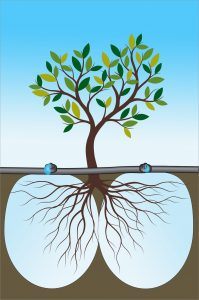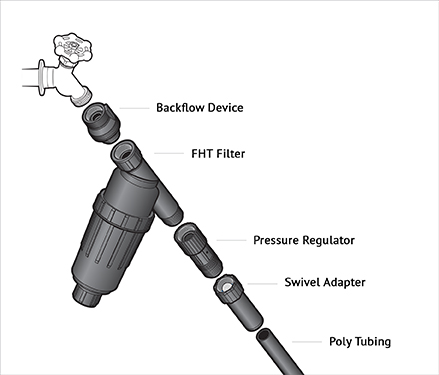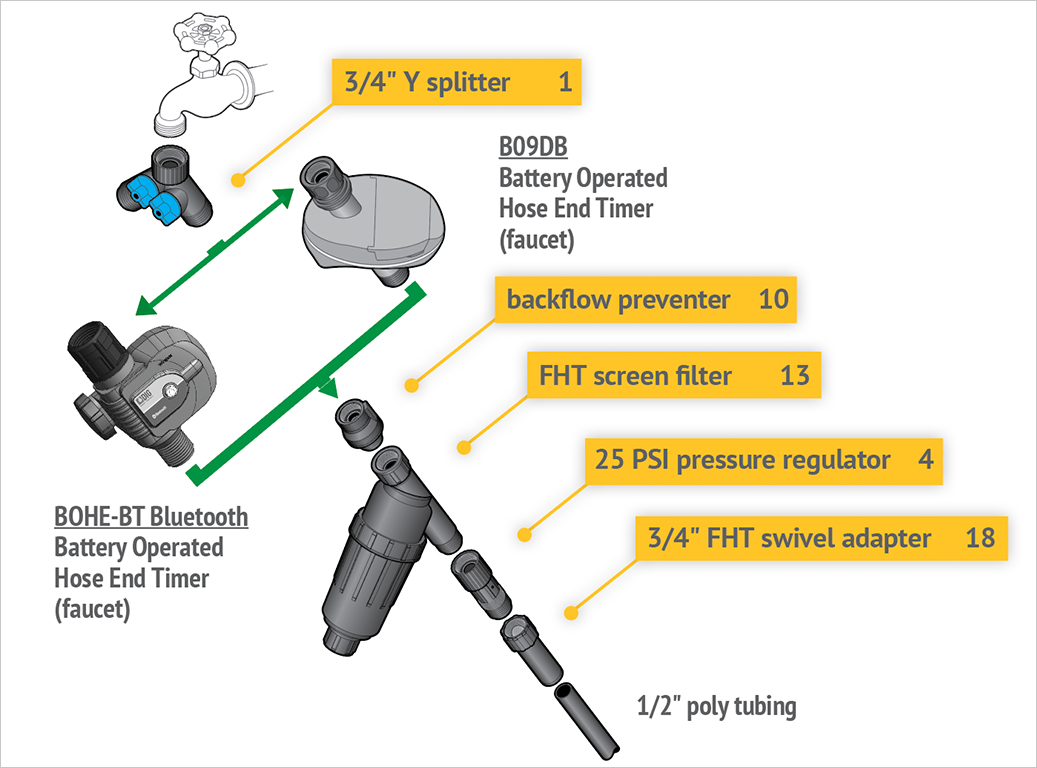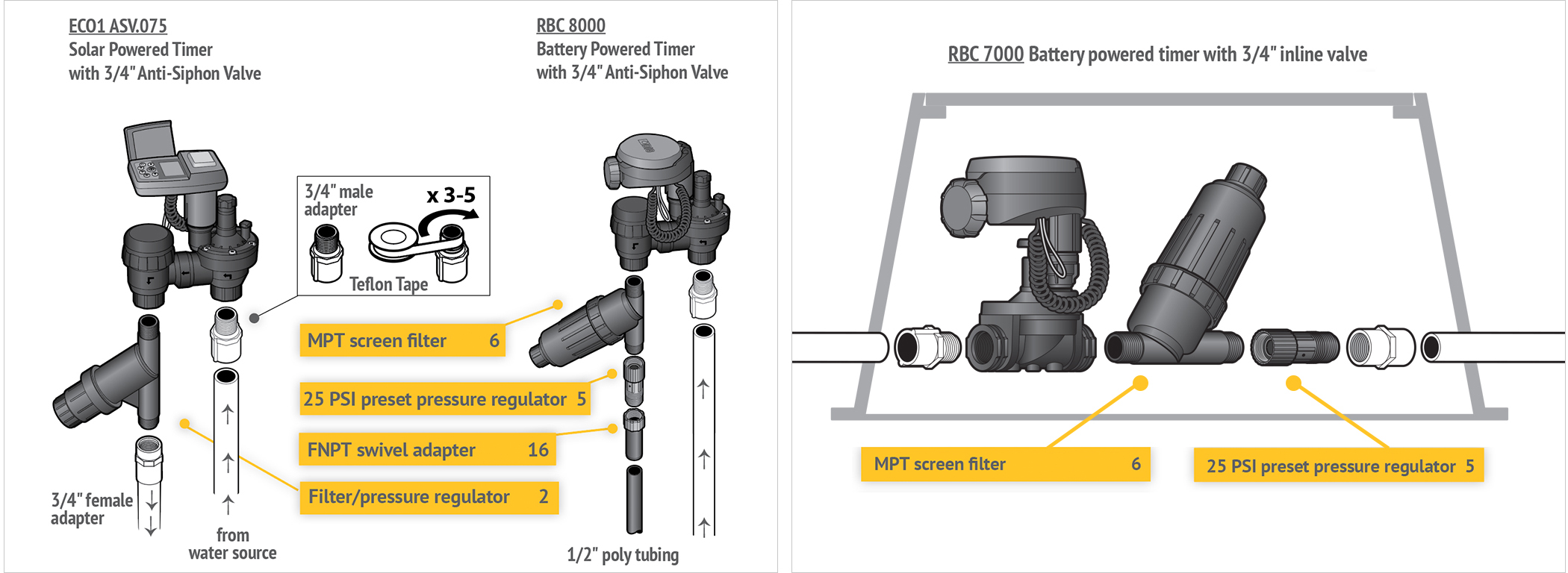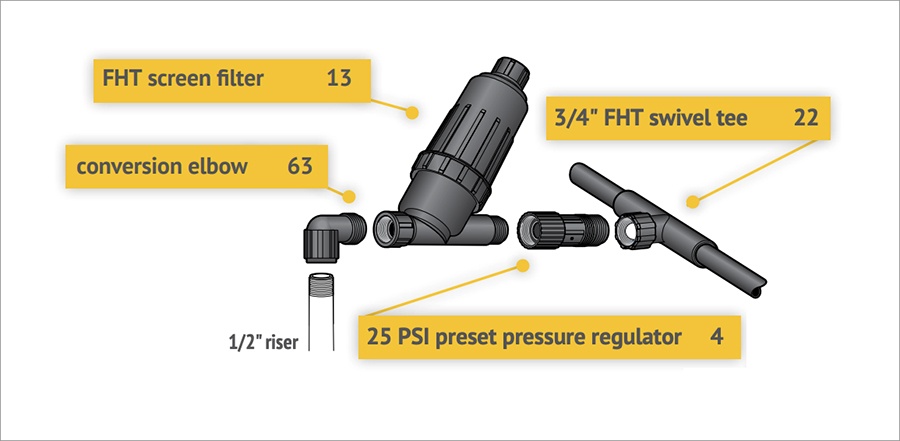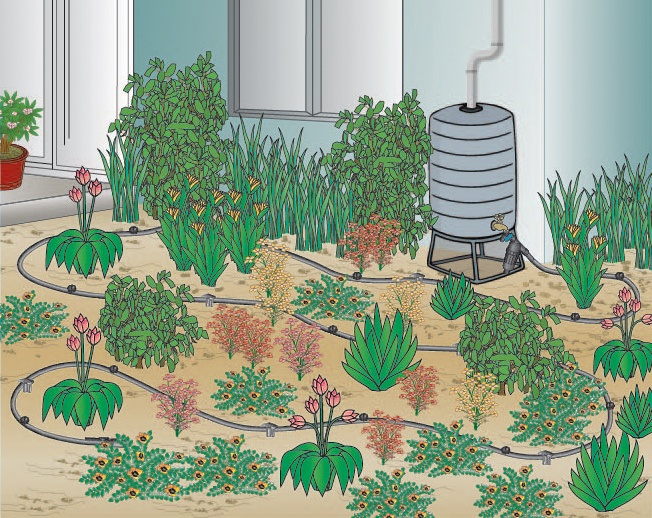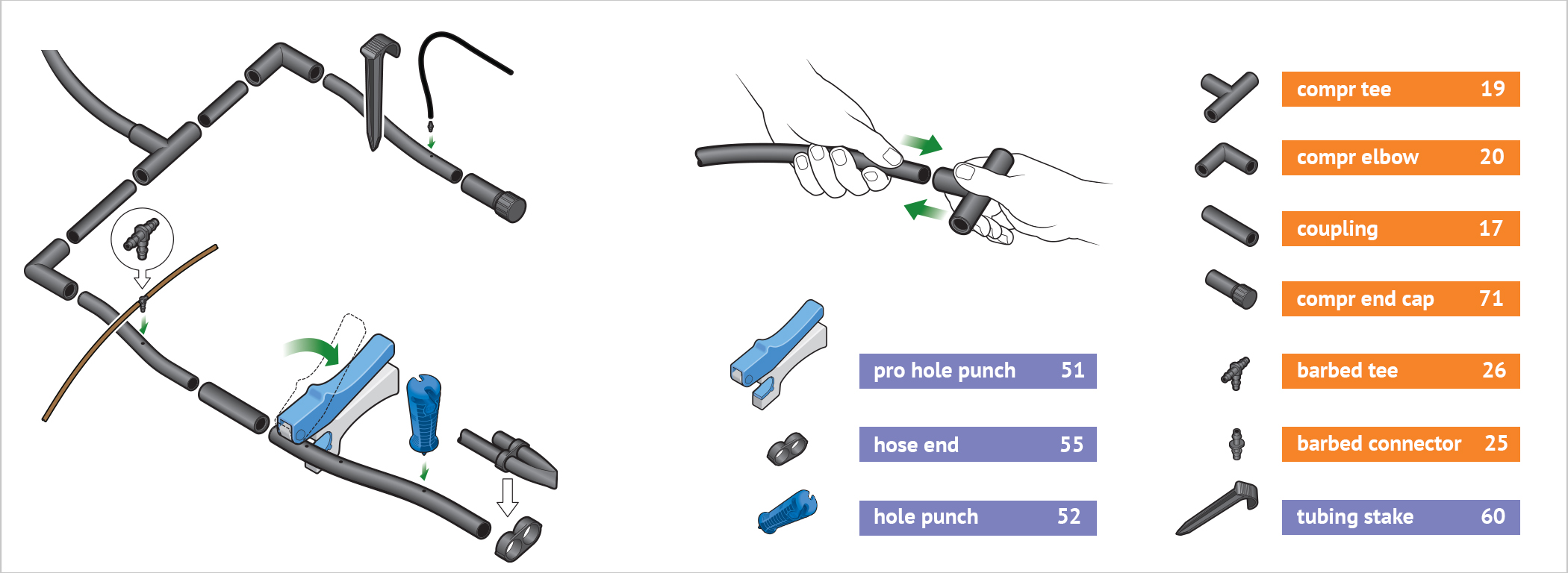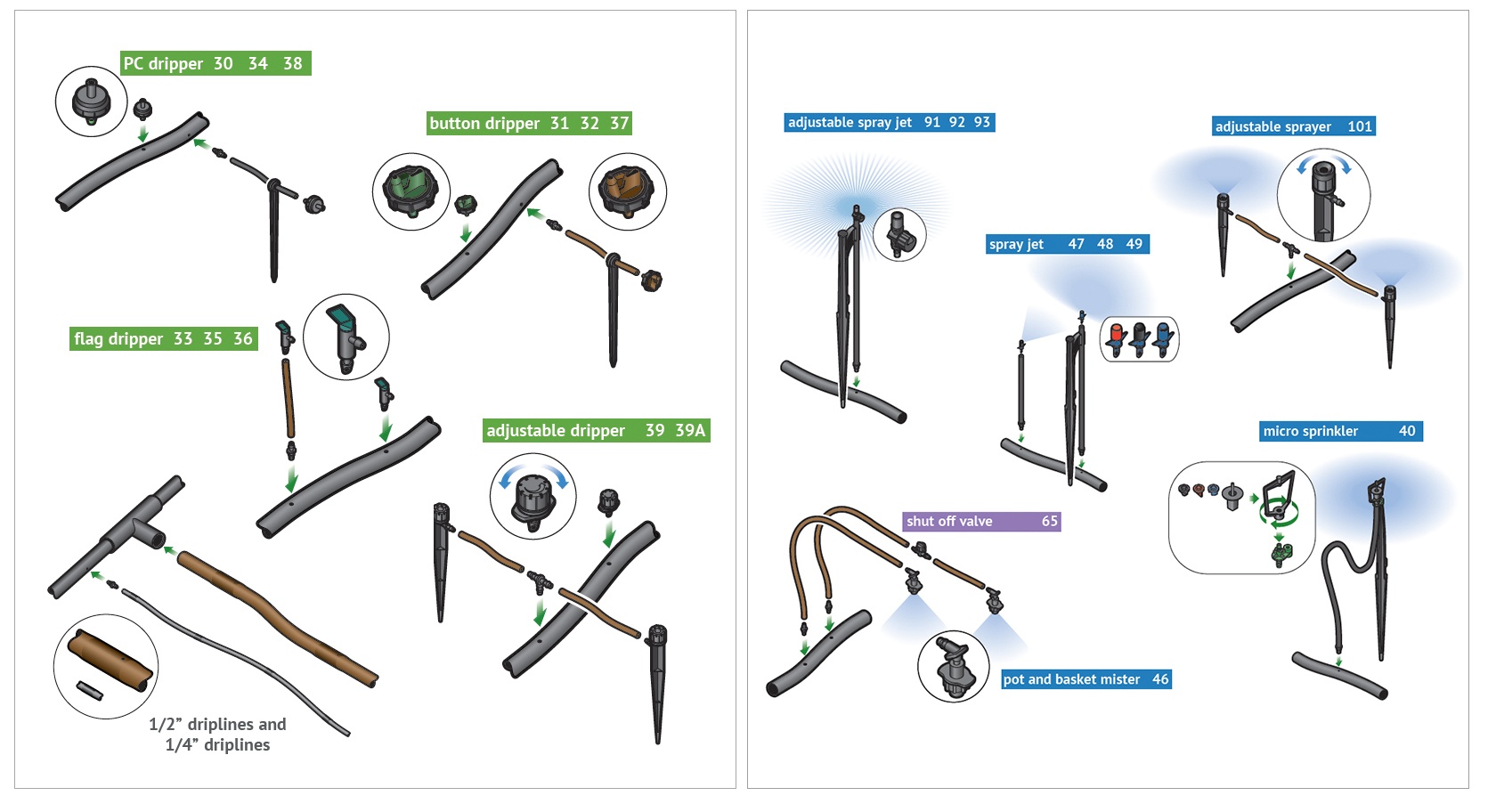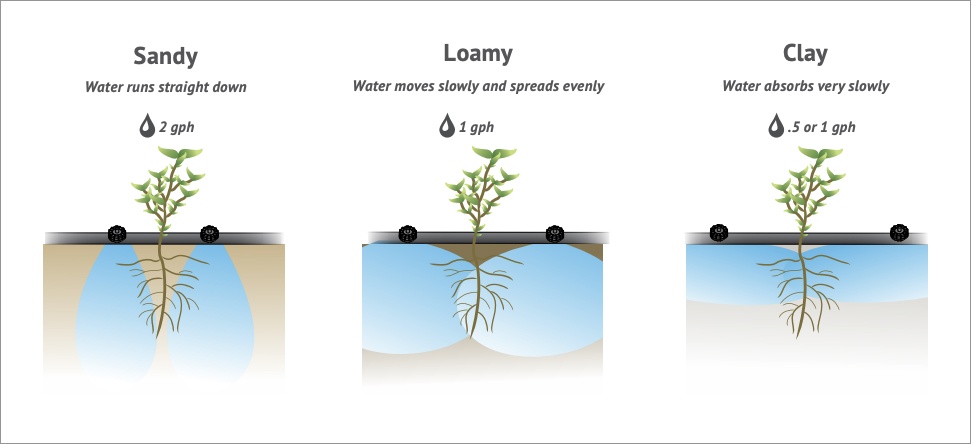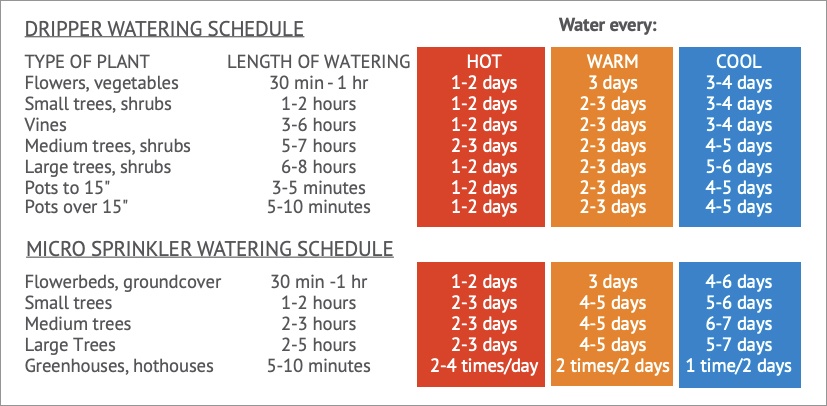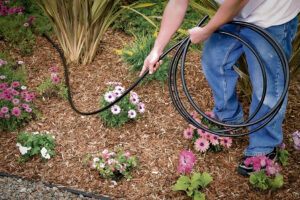The point of connection to a drip system can be a hose bib, anti-siphon valve, inline valve, well, or pump. It may even begin from a sprinkler head riser or from a rain barrel for gravity feed systems. For any application you choose, DIG can provide a convenient and efficient solution.
The key requirement at the point of connection is the “head assembly”, which consists of a filter and a pressure regulator. The head assembly can be attached to a hose bib (hose thread components) or connected to a valve (manual or automatic) (pipe thread components).
In some regions, a backflow preventer or anti-siphon device is required to meet local codes. A backflow device keeps contaminated water from re-entering the water supply and is highly recommended. A vacuum breaker (backflow preventer), when used, is installed on the hose bib (hose thread) before the head assembly. If you are planning to use a hose end timer, mount the backflow after the timer [downstream], to prevent stress on the device.
The filter, used to protect the small water passages of the drip emitters and micro sprinklers, is installed after the backflow device. The pressure regulator (preset or adjustable), used to reduce the incoming pressure to the appropriate range for optimum performance, is installed after the filter.

